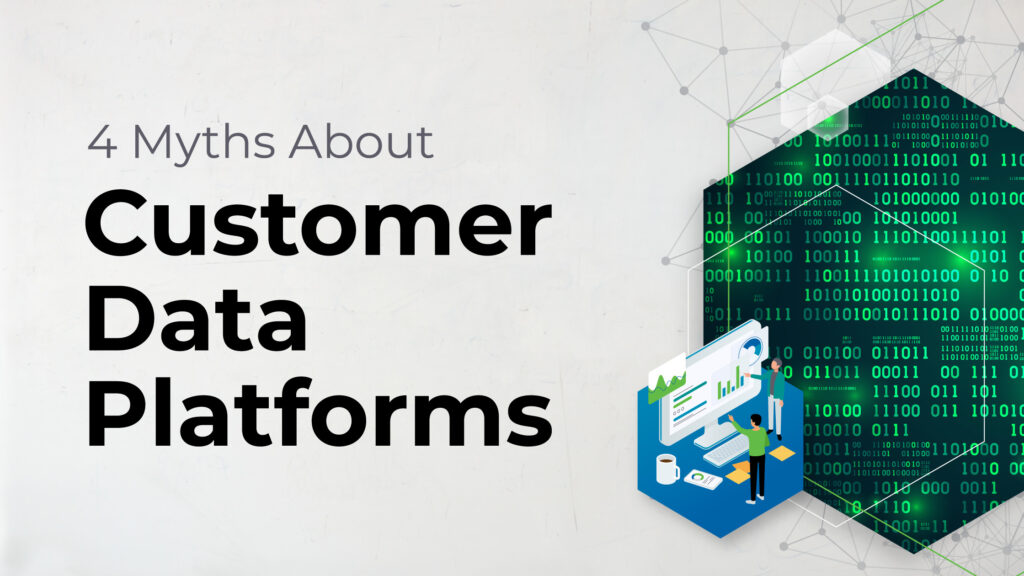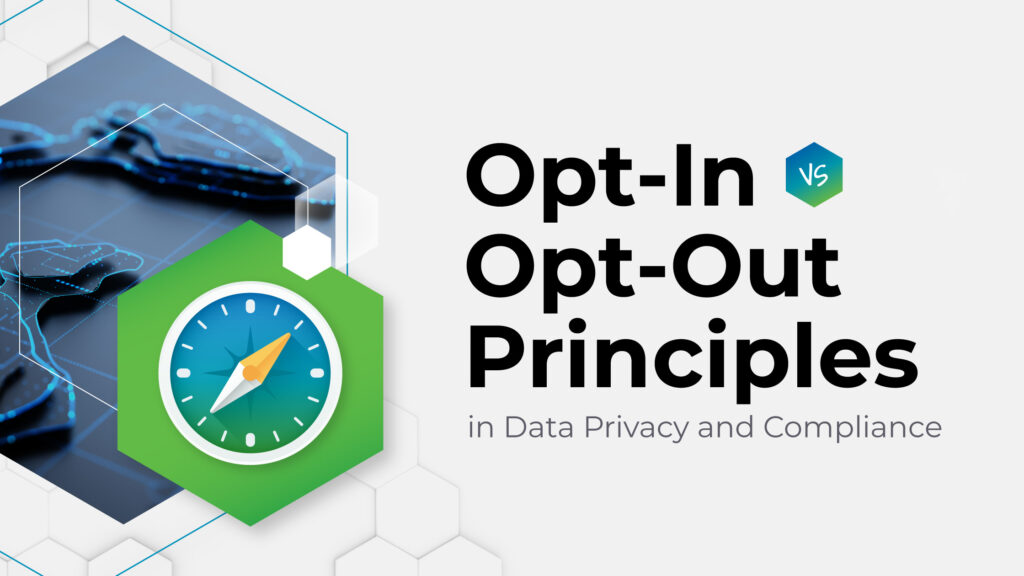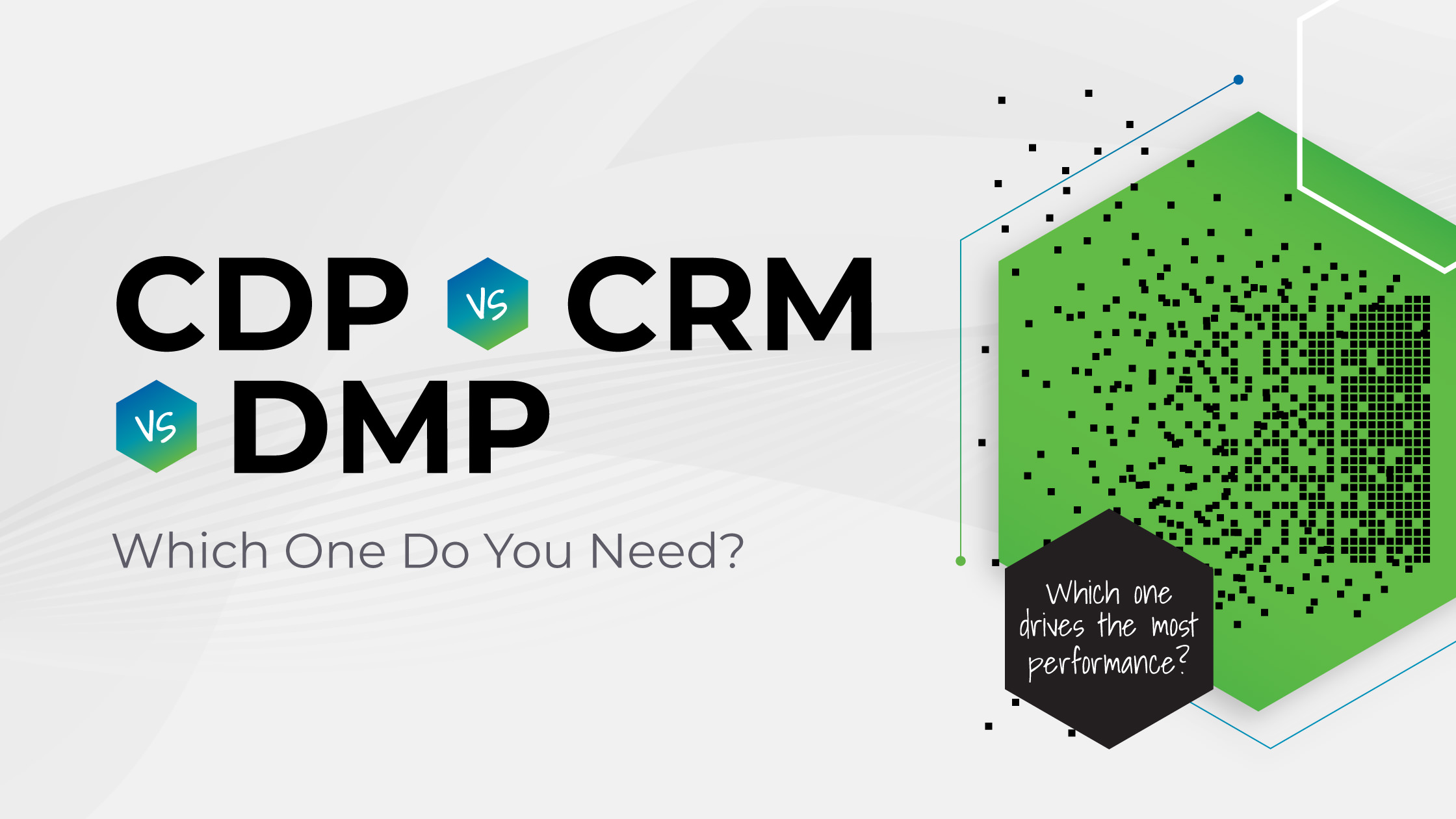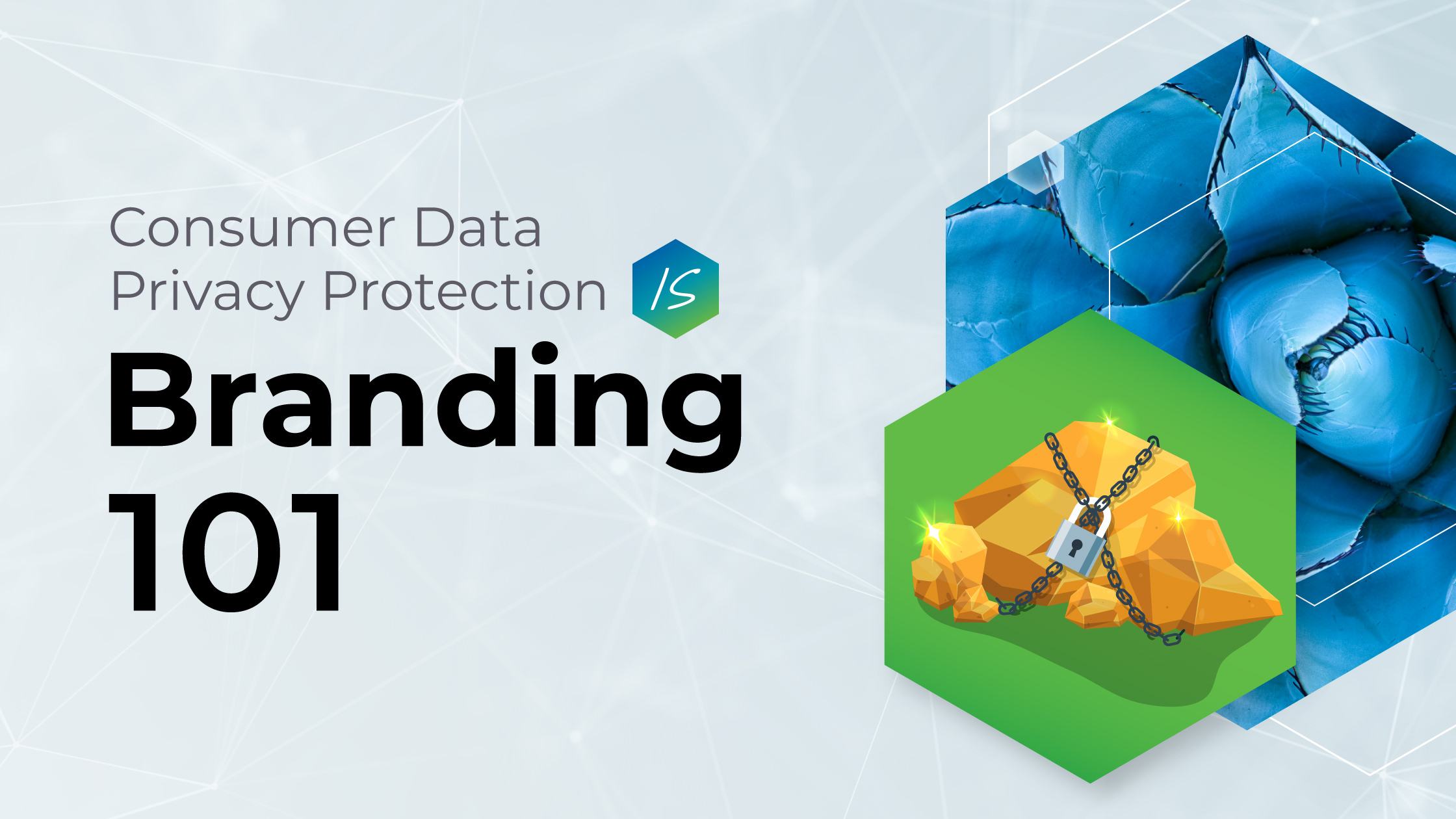
Most of the marketers we meet believe one of two things about their marketing data:
- “I’m 100% certain that I’m making performance decisions based on connected data, like a good marketer should.”
OR
- “There are certain unknowns that data isn’t available for, so I’m using my best judgment and that’s the best I can do.”
We’ll address that second category later on. For now, if #1 sounds like you or someone on your team, please keep reading. With zero finger-wagging energy, we’d like to respectfully challenge your assumption.
In our experience, VERY few brands are basing their marketing operations on connected data, which is troubling.
We’re going to cover:
- What is connected data?
- Why brands who think they have connected data, likely DO NOT
- The game-changing perks of making those connections
- The hurdles you’re bound to face on this journey
- Peek into the future of connected data
What is connected data?
Many brands excitedly point at their mountains of data, as if the accumulation itself was the goal – it never was.
Connected data is the unification of data across multiple sources. This unification produces a complete, 360-degree view of the customer journey, which is (should be) the north star of the most high-performing growth marketing strategies.

Data silos (i.e. chunks of data that are cordoned off from others) are a barrier to innovation, efficiency, and understanding your customers at a deeper level.
Connected data breaks down these barriers, enabling seamless data flows that drive smarter decisions and strategies.
Why brands who think they have connected data, likely DO NOT.
Connected data is sometimes written off as nothing more than a buzzword or inflated industry jargon, but that’s mostly because it’s easier to disregard something complicated rather than wade through its complexities.
Achieving connected data often requires:
- Restructuring and upgrading your martech stack
- Partnering with experts who bring a depth of data expertise that your internal team lacks
- Training internal team members to evolve the way they interact with your data
- And all of the above requires the willingness to release “how we’ve always done it” thinking, which can be scary and intimidating for many people. (Surprise! Marketers are just as human as everyone else.)
Like we said, connected data sounds simple enough but it’s quite a feat – an essential feat that will future proof your business.
3 questions to determine if your data is connected
1.
Do you have a fully mapped customer journey (defined by clean data, not optimism)?
2.
Are all relevant customer data streams unified in one central location?
3.
Do you have the means to make data from Location A speak to Location B? And the rest of the alphabet for that matter?
If you answered “No” to any of those questions, your data isn’t connected.
How To Map Your Customer’s Journey
Explore our comprehensive guide on creating customer journey maps. Come learn practical steps to understand and enhance your customer’s path.
Importance and applications of connected data
Connected data is the backbone of modern business operations across all industries, and it’s quickly become something of a “secret sauce” for acing a growth marketing strategy.
Connected data brings disjointed streams of relevant information together in a cohesive, comprehensible way, so that you can:
- Make more informed decisions
- Spot trends before they spin you around
- Tailor innovative solutions in real-time
It doesn’t matter what sector or industry you’re in, integrating and connecting your data sources lays the foundation for achieving unparalleled success.
Moving from silos to synergy
Transitioning from isolated data silos to a unified, synergistic approach not only demystifies the data maze but also uncovers actionable insights that propel businesses forward.
Here’s how connected data can transform any business:
- Massively uplevel your marketing. By linking campaign data with CRM insights, businesses can sharpen marketing strategies with unprecedented precision and personalization.
- Get A+ financial foresight. Integrating transactional data with inventory insights allows businesses to predict trends, manage resources more efficiently, and make smarter investments.
- Harmonize customer experience. The true power of connected data shines in the realm of customer experience, ensuring the most efficient and effective customer journey.
Industry examples of connected data
Healthcare: Unifying patient records for a comprehensive view that optimizes care and outcomes.
Manufacturing: Connecting IoT data with sales and logistics information could optimize production processes and delivery schedules.
eCommerce: Connecting browsing and purchasing history can significantly improve the degree of personalization in automated marketing campaigns based on customer behavior.
B2B SaaS: Connecting sales and marketing activity can allow brands to streamline service customization, innovation, and problem-solving by diving deep into user needs.
In every case, and across every industry, moving from siloed data to a synergy-driven mindset isn’t just strategy – it’s a game-changing leap that fuels rapid growth and innovation.
Connected data benefits
The benefits of embracing this interconnected approach spill over into every facet of operations, offering a competitive edge that’s hard to replicate.
Connected data transforms decision-making, which then transforms marketing operations, campaign deployments, and overall customer engagement.
Let’s further break down how connected data catapults businesses into new possibilities.
Marketing mastery
The days of the “throw spaghetti at the wall and see what sticks” approach to marketing should be long gone, but unfortunately, a large number of brands are still operating this way.
Time, talent, and budget resources are regularly poured into “strategies” that contain a staggering amount of guesswork and untested assumptions. Yikes.
Connected data is the antidote. It enables a laser-focused strategy, orchestrating multi-channel campaigns that speak directly to the individual needs of potential customers, ensuring every marketing dollar is spent wisely. This kind of precision helps to:
- Drive more conversions
- Maximize ROI
- Streamline marketing workflows
- Enhance customer engagement
- Produce highly targeted content
By utilizing the resources found after connecting your data, you can make sure your marketing message is heard loud and clear in any crowded marketplace.
Deeper customer insights
Think of connected data as your all-access pass into the minds of your customers. It goes beyond surface-level analytics, diving deep into:
- Behavior patterns
- Personal preferences
- Unmet needs
- Communication styles
- Cross-selling and upselling opportunities
Armed with this knowledge, businesses can tailor their offerings to meet the precise desires of their target audience, ensuring that what they put out resonates on a deeply personal level.
More nimble operations
As you dive into the world of connected data, you’ll find it’s like having operational superpowers.
With real-time insights at your fingertips, everything from tweaking processes, production cycles, and how you deliver services becomes a meticulous exercise in precision.
Rashly reacting to market shifts or hunting for efficiencies isn’t the way to outperform competitors – connected data is.
How business leaders can leverage connected data
- Understand the customer journey from A to Z. Getting a 360-degree customer view lets you tailor experiences that feel personal, shorten the sales cycle, and boost that all-important loyalty factor.
- Get incredibly precise with your segmentation. Gone are the days of blanket campaigns. After connecting your data, you can craft campaigns that speak directly to the heart of every segment with surgical precision.
- Know things before they happen. Sounds dramatic, but connected data is pretty much a fortune teller for marketers. The advanced analytics shows you the current landscape and forecasts future trends, performance, and even your competitors’ next moves.
Unlocking the magic of connecting data
So, how do you tap into this wellspring of insight and strategy?
Step #1: Cozy up to the latest marketing technologies.
We’re living in a golden age of tools that can parse, analyze, and interpret data like never before. Invest in the best of these digital wizards to set yourself up for success. However, despite the important role of the data tools we’re highlighting below, there’s one big caveat you need to understand about all this:
On their own, none of the tools below connect and unify all data streams. Not Salesforce. Not even 6Sense. None of them. We broke it all down here:
4 Myths About Customer Data Platforms (CDPs)
Data-driven marketing without a Customer Data Platform (CDP) is impossible. Come learn what a CDP is, and why it’s essential for optimizing performance.
5 connected data tools every brand needs
- Customer relationship management (CRM) system. Tools like Salesforce or HubSpot not only manage your customer interactions but also integrate data from sales, marketing, and customer service to provide a holistic view of each customer.
- Business intelligence (BI) tools. Solutions like Tableau or Power BI make it possible to visualize complex data, uncover trends, and identify actionable insights through dashboard reporting.
- Predictive analytics software. Tools like IBM SPSS or SAS Advanced Analytics use statistical models and machine learning to predict future trends and customer behaviors based on historical data.
- Marketing automation platform(s). Systems like Marketo, Pardot, or Eloqua automate repetitive marketing tasks and streamline campaign management, ensuring your marketing efforts are more efficient and data-driven.
- Customer data platform (CDP). Technologies like Segment or Tealium unify data from all touchpoints, providing a centralized database for a complete, unified view of the customer journey.
While good tools are essential, good tools alone won’t cut it. You also need a good team – data-savvy experts who know how to wield these tools with finesse.
Today’s marketing success requires teams that are as comfortable talking about data analytics as they are about sales funnels and campaign strategies.

Connected data challenges
While we have a clear opinion on this one, we’re by no means slapping a happy sticker on the entire connected data conversation.
As we mentioned earlier, wrangling connected data is not a casual walk in the park. Honestly, it’s more Indiana-Jones-trudging-through-the-Amazon.
- Thrilling? Yes.
- Daunting? It can be without qualified partners.
- But are you massively restricting performance without it? Undoubtedly.
Thoroughly connected data (that’s the only kind worth talking about) brings challenges like:
- Premium prices
- Integration complexities
- Finding technical talent
And let’s not forget the importance of regulated data privacy and data security concerns, which are bigger than most brands want to acknowledge.
Data Privacy vs Data Security: A Guide for Business Leaders
Unlock the secrets of data privacy and security. Learn the differences, legal requirements, and best practices for all business leaders in protecting user data.
But despite the associated challenges, the upsides of connected data are too enormous to walk away from – the insights, the targeted actions, the competitive edge.
The key is to approach your data unification journey with eyes wide open, prepared for the challenges but focused on the destination of unmatched realms of growth – a comprehensive, data-driven understanding of your business, your customers, and the market at large.
The view from the top, indeed, makes every challenge faced along the way worth it.
Trends and what to know moving forward
Connected data isn’t gradually climbing the charts – it has catapulted into best practices for all category leaders across every vertical.
But staying ahead of the curve requires a proactive and strategic approach in order to position your business at the forefront of the data revolution. Here are some things to consider as we move deeper into a more connected world:
AI, ML, and IoT are the acronyms of the future
Artificial intelligence (AI), machine learning (ML), and the internet of things (IoT) are already revolutionizing the way we handle and interact with data, and they’re only going to get more embedded into our daily lives.
In particular, IoT is set to become a major driver of connected data growth. As devices become “smarter” and more interconnected, the volume of data generated will increase dramatically, transforming connected data from a strategic asset into an operational necessity.
All these things together will usher in a new era of connection, allowing businesses to:
- Anticipate customer behaviors like never before
- Highlight market shifts
- Solve operational challenges
- Design tailored solutions and services
And all with unprecedented accuracy. This means you’ll not just be reacting to the market, but proactively shaping it to your advantage.
Privacy is paramount
As consumer awareness and regulatory scrutiny around data privacy intensify, businesses will need to adopt a privacy-first approach in their data strategies.
This involves not only compliance with privacy regulations like GDPR and CCPA but also a fundamental rethinking of how customer data is collected, used, and stored.
Opt-In vs Opt-Out Principles in Data Privacy and Compliance
You need to understand the critical differences between opt-in & opt-out in data privacy. Explore GDPR, CCPA, and email opt-in laws for compliant marketing.
Data privacy and security are no longer just an afterthought – they’re a core component of sound business strategies. Indeed, privacy-first marketing strategies are the bedrock of any forward-thinking company.
Technical expertise is key
Collecting data is one thing, but analyzing it is a whole new ballgame.
Having seasoned experts on your side is a necessity. Specialized digital marketing technologists bring a wealth of knowledge and experience that can dramatically shorten a brand’s learning curve and provide a shield from common pitfalls.
TL;DR on Connected Data
- Connected data builds a seamless data network, providing a 360-degree view of your business, which is essential for modern and strategic marketing operations.
- Eliminating data silos enhances innovation, efficiency, and customer understanding by enabling smooth data flow and smarter decisions.
- From hyper-targeted marketing campaigns to deep customer insights and agile operations, connected data offers unparalleled competitive edges.
- Despite its huge advantages, integrating connected data also presents challenges like high costs, complexity, technical talent acquisition, and stringent data governance.
- The evolution toward a more connected world will see AI, ML, and IoT driving growth, with a strong focus on adopting privacy-first strategies in order to comply with increasing data protection regulations.








